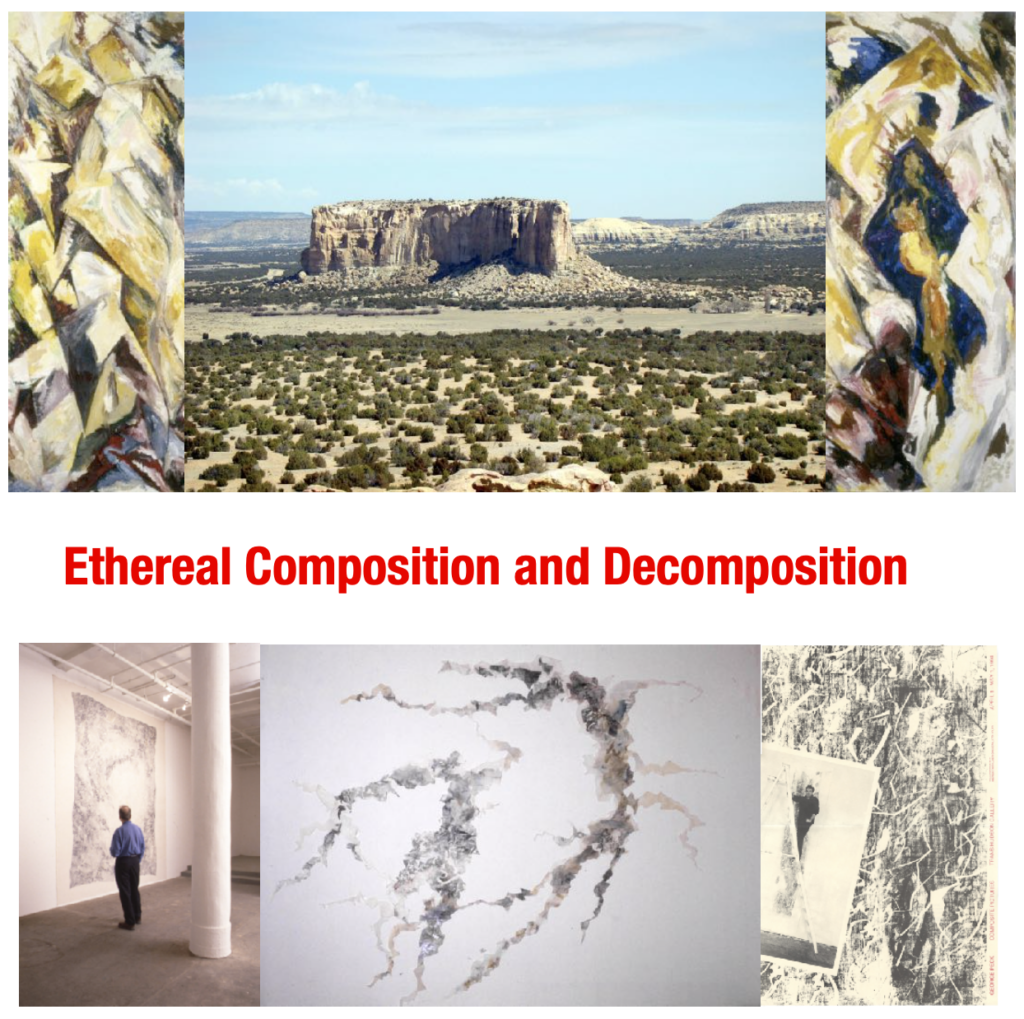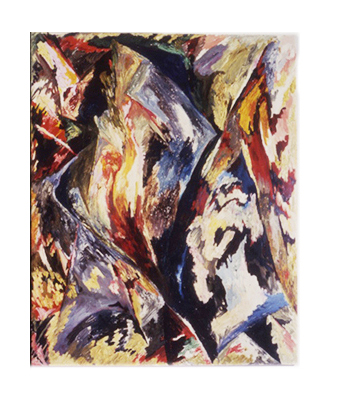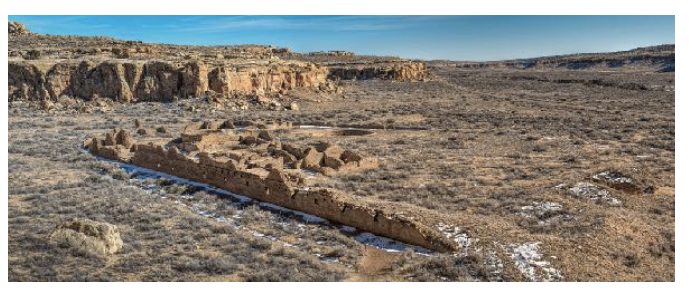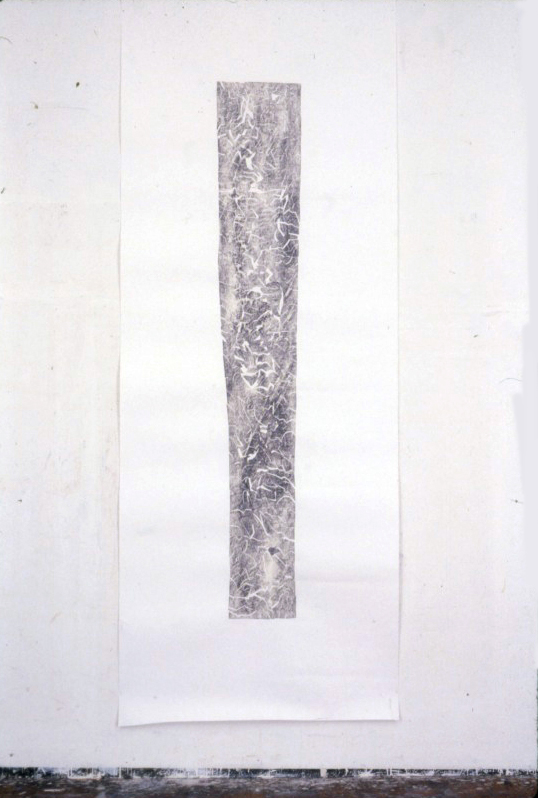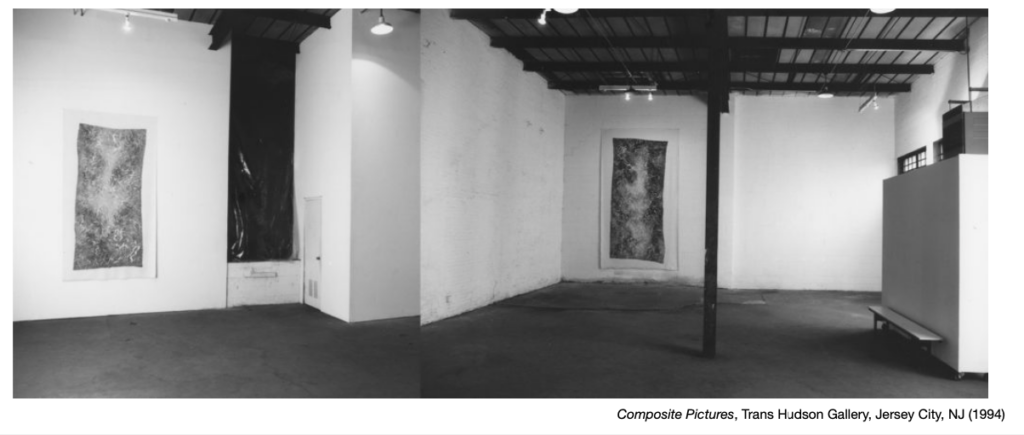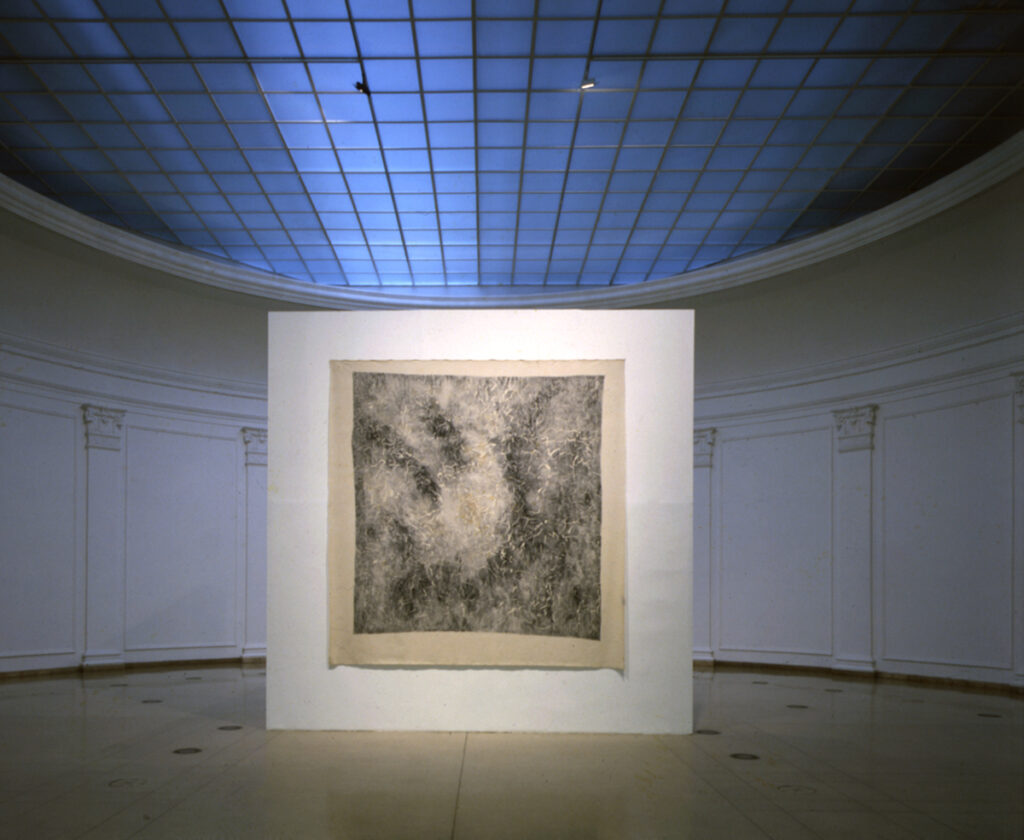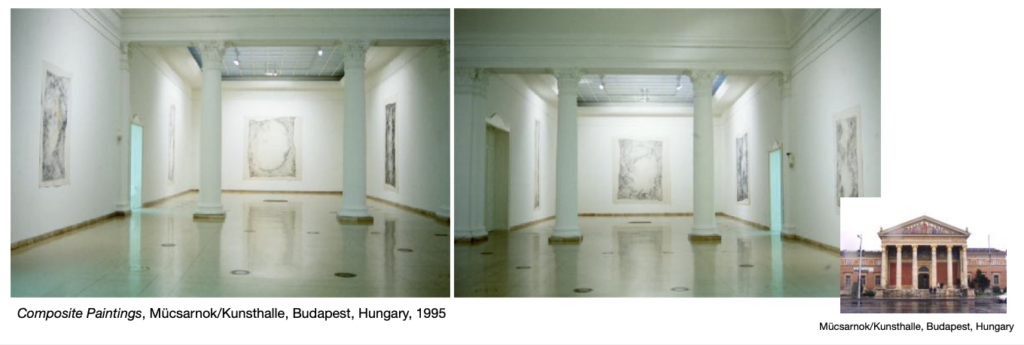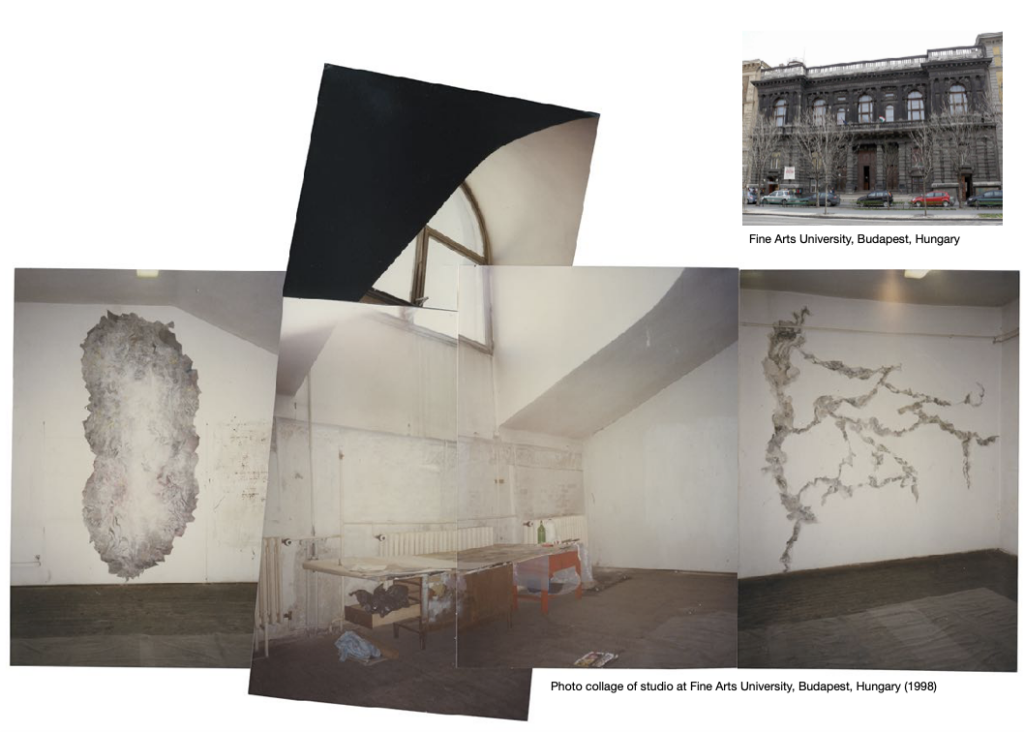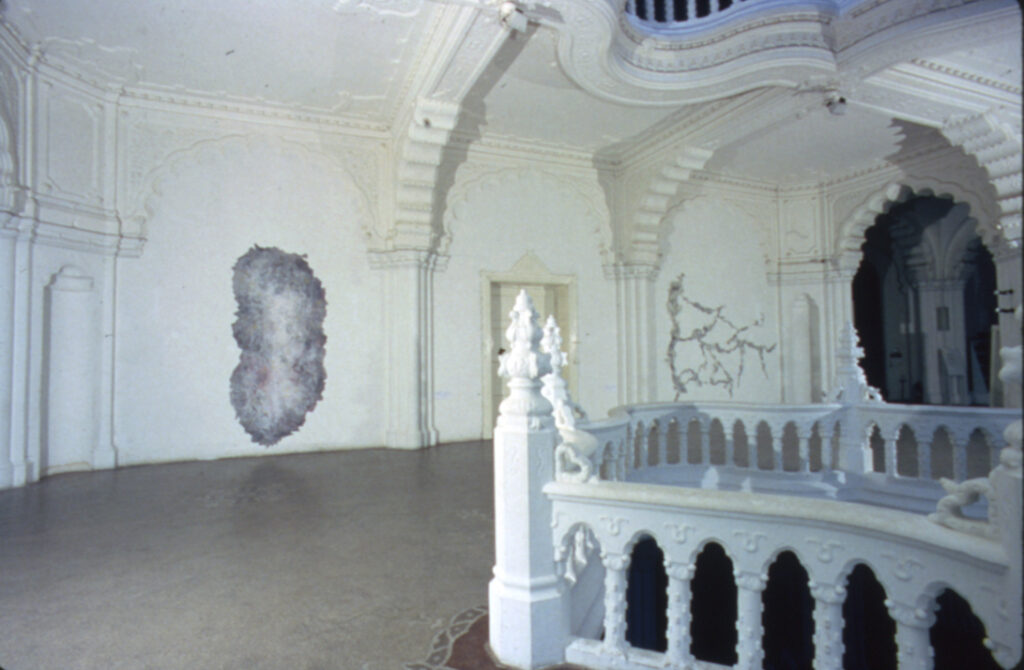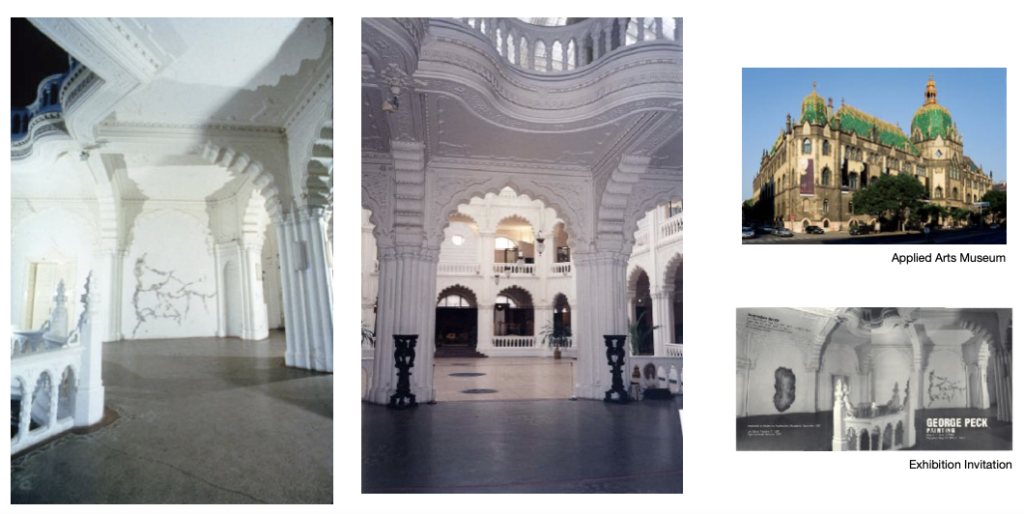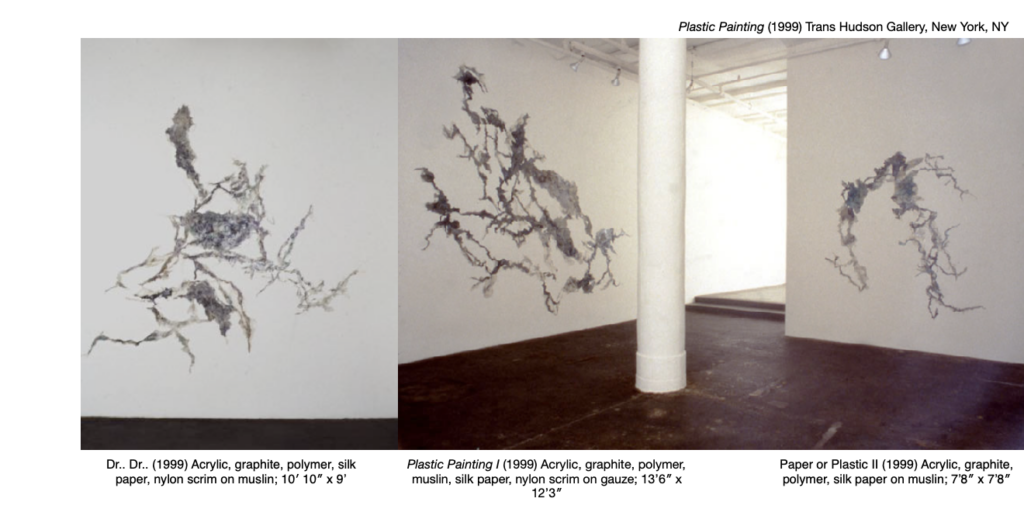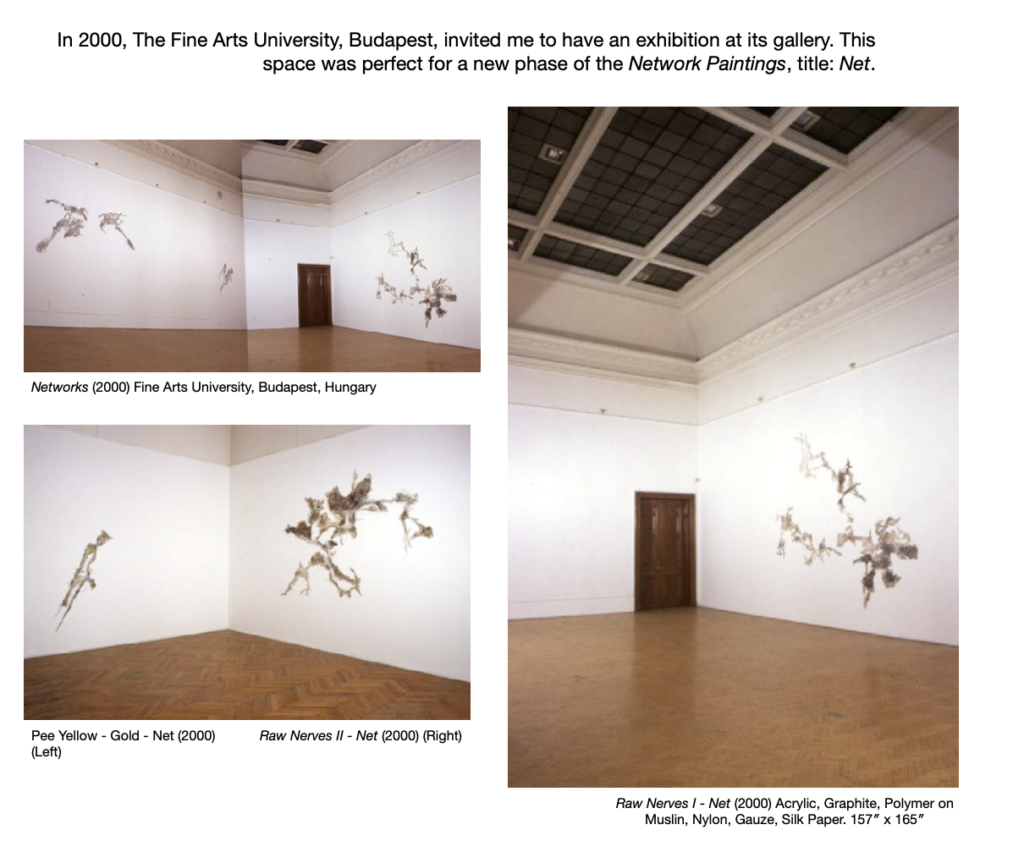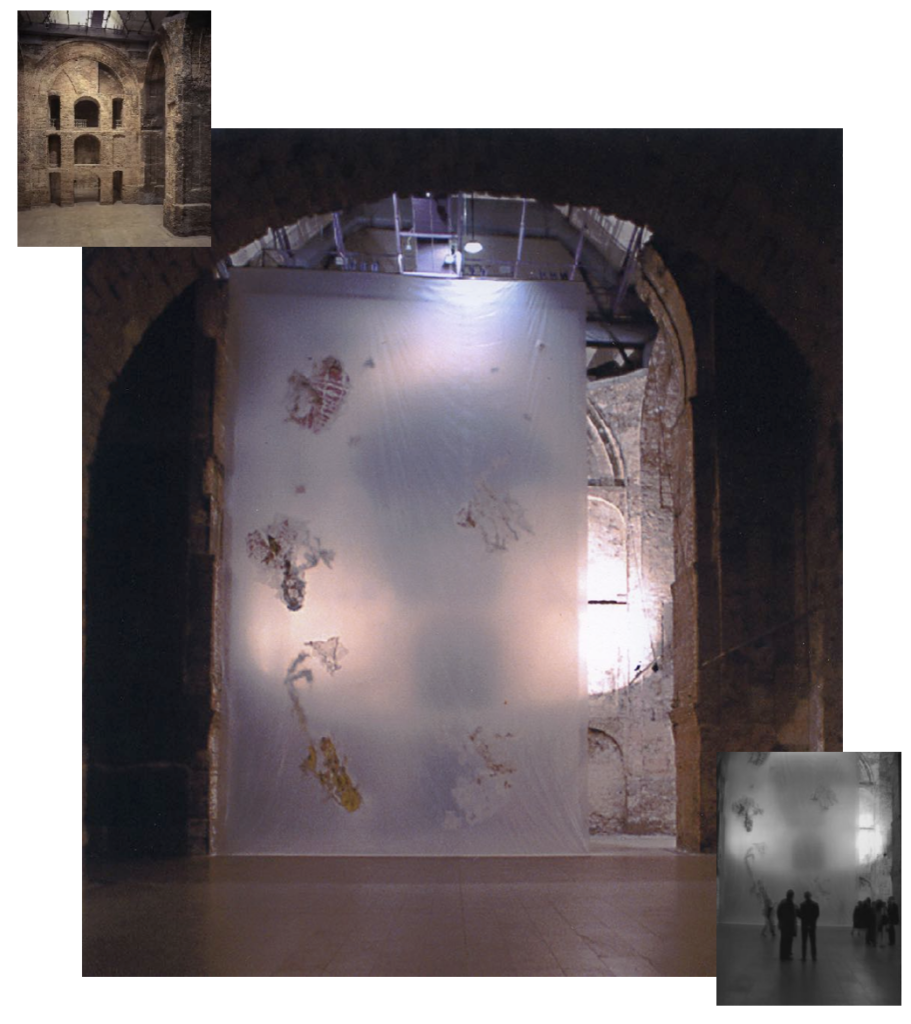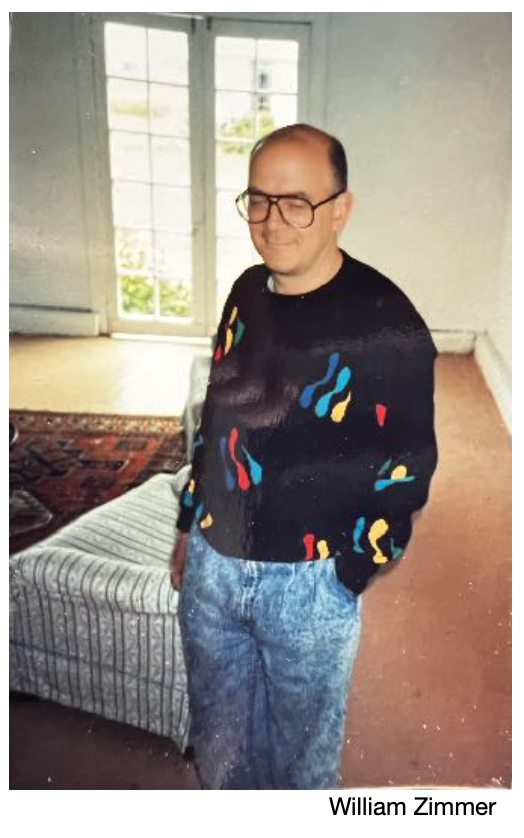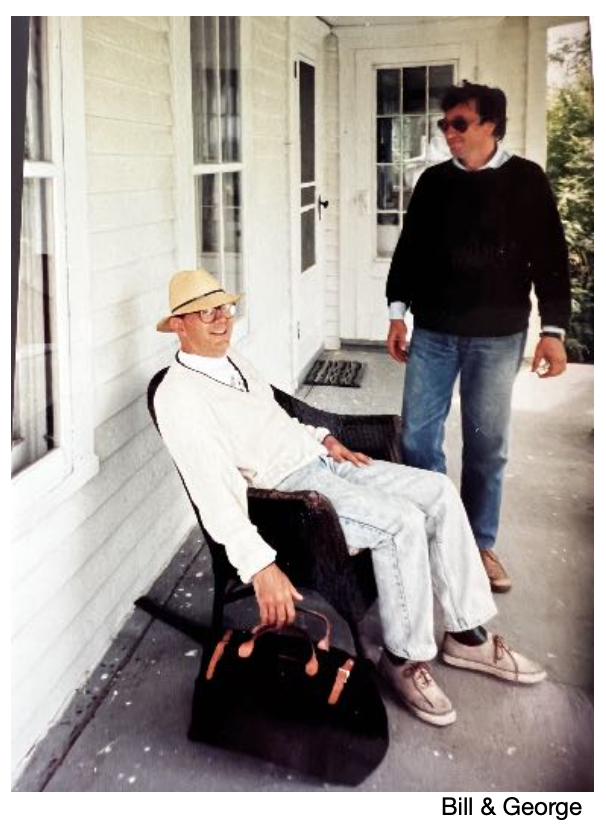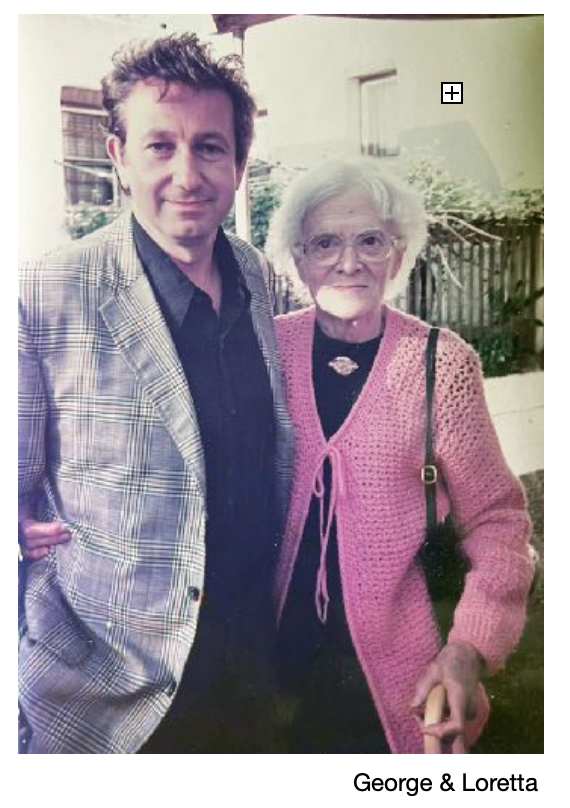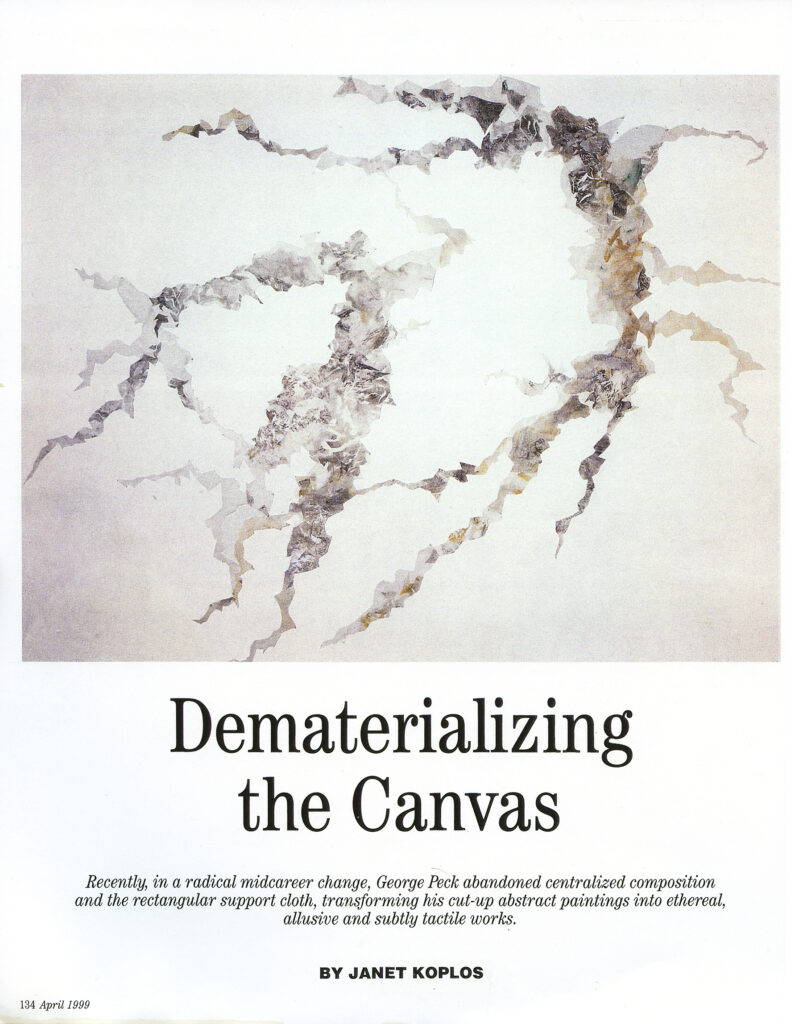No products in the cart.
Studio Update #13
Going back, the origins of this body of work is rooted in the history of my travels in New Mexico with Bill Zimmer*1 in the 80’s.
Bill invited me to come to Santa Fe, where he was from and where his family was living. Entering this world unknown had an immediate and lasting effect. Each trip we rented a car and zig zagged across the state.*2 For him, revisiting and for me, an introduction.
His family lived in an adobe house in the old part of Santa Fe, giving an impression of their love and respect for that world in which they inhabited. His mother, Loretta La Rue*3, decided as a young woman to move to New Mexico and to teach on a native reservation. She did so til the end of her life.
Bill grew up surrounded by the idea of the love of this land and of the respect for the native people inhabiting it.
William Zimmer was an art critic who reviewed my first exhibition (for ARTnews) at Susan Caldwell Gallery in 1977, in New York. I may not have agreed with all that was said, but for a young artist who just had his first exhibition, it was a promise of interest and attention. A place marked in the art dialogue.
Years later, a painter friend, Jake Berthot,*4 had a party at his Bowery loft where I met Bill. We stuck up an interesting conversation followed by his coming to my studio- and a lasting friendship.
Years after, our travels unfolded. Through this, I was exposed to a landscape of eclectic textures. Dry jagged edges shimmering in the South Western sun imprinted an almost cubist impression. Deeply affected by this imagery, the paintings I made after reflected the outstanding sensation of the experience.

Every turn of the road in New Mexico is to come face to face with the subtle power of the changing landscape. After one of our long drives, we got back to Bill’s parents’ house on a street called ‘Acequia Madre’*5. It was a dark blue sky, a hallucinatory moment, one could hardly make out the adobe buildings, pinion smoke drifting in the air. A moment of weightlessness, floating parts dizzying, the infinite sky with objects in midair. Light emanated delicately and color took on an otherness. I had to capture it. It started me on a long exploration.
 Acequia Madre II (1988)
Oil on Linen, 50′′ x 38′′
Acequia Madre II (1988)
Oil on Linen, 50′′ x 38′′
Acequia Madre IV (1988) Oil on Canvas, 78″ x 168″
In the early 90’s, I conceived a different way of structuring a painting, a way to explore physicality, a release of light, a new reconfiguration of space emerged.
Composite Pictures started when I made a small sculpture out of bronze sheets, cutting and reassembling.
I moved on to the possibility of facing a finished painting, cutting it up and then rearranging it into a new composition. The sharp edges carry a swift light, the fissures like open wounds released a new kind of light and energy.
“For a few years now, [Peck] has been making images out of images; that is, he cut up existing canvases, then put them back together on new grounds. This time, however, he makes his images from scratch, using a mix of black acrylic, graphite and polymer, which he applies by way of smudges, streaks and frottage to muslin. After that, it is slicing and reassembling, as before.
The results, applied in a more or less rectangular format to un-stretched white canvas, look like smoke. But because of the cracks of white between the pieces (one wonders if the fragments, like the drifting continents, would fit together if pushed), the ‘smoke’ becomes a solid mass in the process of shattering.
There are four large muslin shapes on canvas and four small ones that are paper on paper and, together, they could persuade their beholders that they are witnessing some Dada law of physics in action. Then again, the images could as easily be premonitions of global destruction or simply compositions inspired by Sartre’s book
title ‘Of Being and Nothingness’.”
(from Vivien Raynor’s “Images Made by Slicing and Reassembling”, The New York Times, Sunday, April 24, 1994) *6
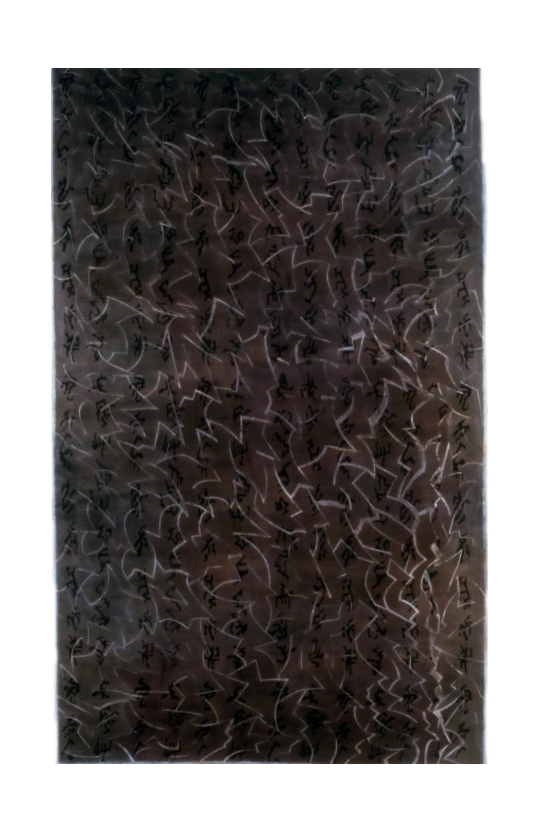 Composite Picture 5 (1992) Oil on Canvas, 80″ x 50″
Composite Picture 5 (1992) Oil on Canvas, 80″ x 50″
Composite Picture No.52 (1993)
Polymer and Graphite on Paper on Paper, 132 3/4″ x 50 1/4″
These works impressed the gallerist Joseph Szoecs, who was in the process of turning an auto body shop in Jersey City into a gallery – The Trans Hudson Gallery.
There I exhibited the Composite Pictures for the first time. The completed cut up paintings on unstretched canvas were tacked onto the bare walls. The roughness of the space underlined the violent act, the gesture of the cutting – at the same time gave a valuable contrast to the refinements of the paintings themselves.
In 1994, the director of the Kunsthalle (Muscarnok), in Budapest, Dr. Katalin Keseru, invited me to exhibit the Composite Pictures there.
The classical building’s footprint resembled the layout of a church. She wanted the works to be shown where the altar would be, and in the two adjacent rooms on either side. In the center was a freestanding wall. As you entered the museum you could see Composite Picture No.0001 immediately in the distance.
Composite Picture No.0001(1993-94) Acrylic and polymer and graphite on muslin on canvas, 140” x 140.5”
My preference was to show these works in much rougher spaces. I asked to have an adjacent exhibition, which Dr. Keseru accepted. It was to be in an alternate space, organized and curated by two very progressive women, Adele Eisentstine and Hilda Kozari.
The space was a derelict Turkish Bath. The large painting they picked, Composite Picture No. 0001A (1995), had to be rolled up every night as there was no security, and had easy access to ill doers.
In 1996, after the exhibition at the Kunsthalle, Professor Janos Sturcz of The Fine Art University invited me to teach a course.
As a practicing artist, teaching never appealed to me, but getting to know the first generation of Hungarian artists coming up after the country turned democratic, just five years before, peaked my interest. The course turned out to be a very interesting conglomeration of many topics, art history, applied arts, architecture, digital art, politics; an intense pressure cooker. I ended up turning the students’ interests, which led to an ongoing relationship since.
At the same time, I had a studio at the University where I continued painting. The environment, and the history of Budapest had a heightened impact on me.
I made a Mirror Painting and most importantly embarked on the new concept of the Network Paintings. Leaving the rectangular formant behind, this new possibility moved freely between positive and negative space, and beyond. The paintings resembled large cracks in walls falling apart, revealing the structure “underneath.”
“The works read interestingly at every distance – as shapes when seen from across the room and as plays of intimate incident when seen up close, where brushstrokes can be discovered, along with overlapping layers of cloth, and bits of gold or silver pigment mixing with shiny passages of glue. The paintings are lyrical from both viewpoints. They’re moody, mysterious, accumulative and alive in the near view, while the beauty of the cutting is best grasped from afar. It is another gesture entirely. Looking at the edges, one can easily imagine the quick flash of the knife. It is a means to an allover effect rather than graphic isolation, and thus closer to the fluidity of Pollock’s drips (though probably more selected and controlled) than to Matisse’s cutting.” (Janet Koplos, Art in America, April 1999) *7
The Director of the Applied Arts Museum, Dr. Zsuzsa Lovag, came to my studio at the University and shortly after asked me the exhibit the works.
The museum was a magnificent, Hungarian Art Nouveau building, which created a powerful frame and environment where these two unconventional paintings were displayed.
George Peck, Painting (1998) Applied Arts Museum, Budapest, Hungary Featuring Mirror IV (Left) and Untitled Network (Right)
In 1999, I had a great workspace at the American Academy in Rome, where I completed a body of work. Later that year, they were to be shown at the Trans Hudson Gallery in New York.
The title of the exhibition was: Plastic Painting.
In 2002, Dr. Peter Fitz, the director of the Kiscelli Museum / Municipal Gallery – Budapest, invited me to have a retrospective exhibition. He wanted me to be able to to include works progressing up to what I was working on at the time. The museum itself embodied a huge wall remaining from WWII bombings. A theatrical setting, where contemporary works had to compete with this powerful presence. Along with my paintings, in retrospective progression, I created a very large scale of work of a transparent plastic: Cell’s Life. (47’ x 25’) It was not only created as a wall of the painting, but allowed the looming architectural remains to be reduced into the background.
In the beginning of this process, I had no idea that it would be such a long exploration, culminating with Cell’s Life at the Kiscelli Museum in Budapest.
A work in large scale and in large vision. It not only rearranged space, but also created a new space, new environment. Cells in an enormous petri dish, alive and demanding a full life.
Cell’s Life (2002) Acrylic, Textile, Paper between Plastic Sheeting; 47′ x 25′
Installation at Layered Time, Layered Paint (2002) Kiscelli Museum, Budapest, Hungary
__________________________________________________________________________________________________________
*1 Wiliam Zimmer – Art Critic
(New York Times, Arts Magazine & others)
https://www.nytimes.com/2007/10/07/nyregion/07zimmer.html
*2 Northern New Mexico
*3 Loretta La Rue, taught at San Juan Pueblo, now called Ohkay Owingheh; Wiliam Zimmer’s Mother
*4 Jake Berthot – Painter and Teacher
More information can be found at https://georgepeck.net/portfolio-item/studio-update-12/
*5 Norbert & Loretta Zimmer’s (Bill’s parents) adobe house on Acequia Madre
*6 Vivien Raynor’s – Art Critic (New York Times, ARTnet, Art in America)
Images Made by Slicing and Reassembling,
The New York Times, Sunday, April 24, 1994
https://georgepeck.net/wp-content/uploads/0026/11/last-painting-4-scaled.jpeg
*7 Janet Koplos – Art Critic, Art in America, Author
Article: Dematerializing the Canvas
Art in America, April 1999; (See following pages)
Date:
April 23, 2023


